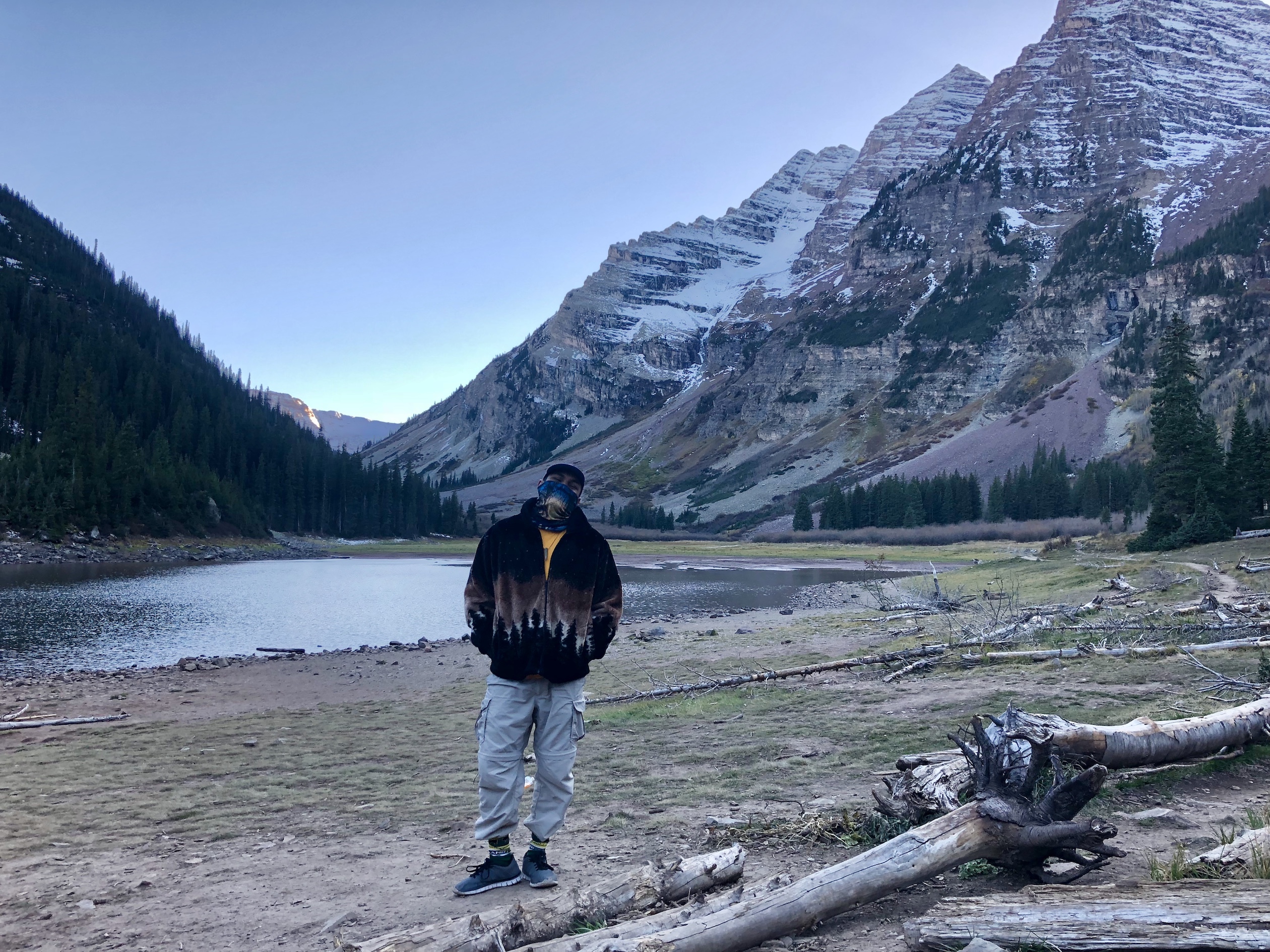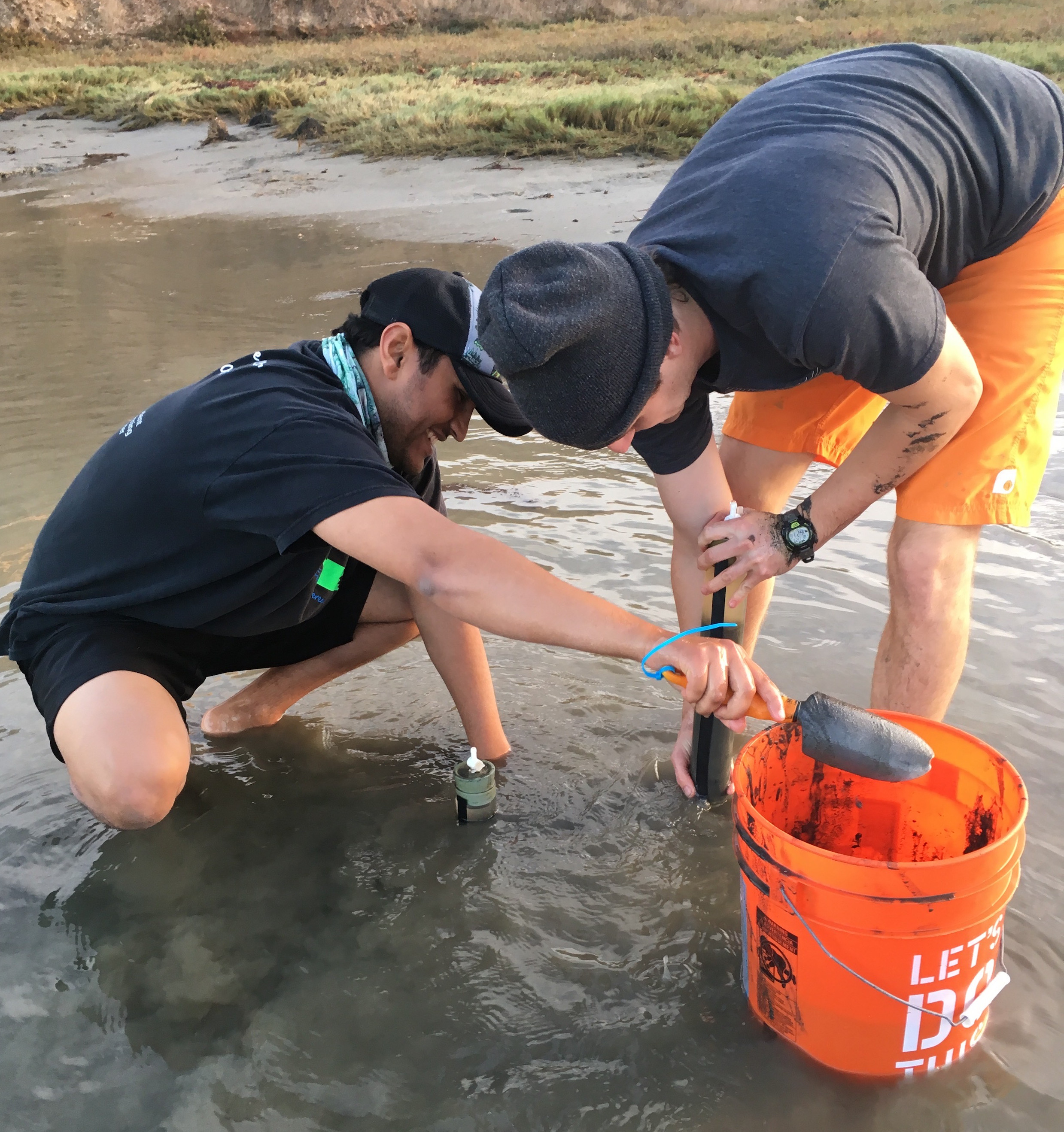By: Yubin Raut
Hey there folks! My name is Yubin Raut and I’m a fifth-year graduate student in the Capone lab at the University of Southern California. Our lab routinely investigates different aspects of the marine nitrogen cycle, primarily focusing on biological nitrogen fixation.
What’s so great about nitrogen? Well, nitrogen is an important constituent of many of life’s building blocks such as DNA, RNA, and proteins, making it essential for all living things, from tiny microbes to some of the largest organisms on Earth like blue whales. However, despite making up ~78% of our atmosphere, most organisms cannot directly utilize this large reservoir of dinitrogen (N2) gas. This is where biological nitrogen fixation comes into play. This part of the nitrogen cycle is carried out by specialized microbes (bacteria and archaea) referred to as diazotrophs – “di” meaning two, “azo” meaning nitrogen, and “troph” referring to food or nourishment. If you put all that together, it simply means the conversion of N2 gas into a nutrient source. More specifically, diazotrophs or nitrogen fixers are essential in converting an inaccessible source of nitrogen into a biologically usable form of nitrogen such as ammonia that can be utilized by other organisms and eventually make its way up the food chain to larger organisms, like the blue whale.
 Quick background into how I got interested in oceanography: During my undergraduate at Texas A&M University, I was originally pursuing a degree in biology but my passion for travel and the outdoors led to my discovery of geology. In the end, I completed both degrees, but it wasn’t until my last semester when I stumbled into an oceanography minor that I found myself engaged with learning in a way that I had never experienced before. The ocean is a marvelous wonder with much left to be explored and so I dived into – no pun intended – the Ocean Sciences program at USC ready to explore what the ocean had to offer.
Quick background into how I got interested in oceanography: During my undergraduate at Texas A&M University, I was originally pursuing a degree in biology but my passion for travel and the outdoors led to my discovery of geology. In the end, I completed both degrees, but it wasn’t until my last semester when I stumbled into an oceanography minor that I found myself engaged with learning in a way that I had never experienced before. The ocean is a marvelous wonder with much left to be explored and so I dived into – no pun intended – the Ocean Sciences program at USC ready to explore what the ocean had to offer.
Although I moved to LA 5 years ago, the Wrigley Marine Science Center (WMSC) has effectively served as my 2nd home where I have spent a cumulative total of ~1 year of my life. Are you wondering how I managed to spend 1/5th of my graduate degree on Catalina Island? It’s because I have been so very fortunate to receive the Wrigley Institute Graduate Summer Fellowship or Victoria J. Bertics Graduate Summer Fellowship since I started my graduate school journey at USC in 2015. Both of these opportunities allowed me to spend summers on Catalina Island which have been a dream come true. The experiences and friendships accrued there have been the source of some of my fondest memories and the WMSC has served as my primary research platform. I have spent most of my time exploring the relationship between some of my favorite microbes, the nitrogen fixers, and various seaweeds surrounding Catalina Island.
 During one of my routine snorkels around Big Fisherman’s Cove next to WMSC a few summers back, there was much more sediment cover exposed than what’s usually there – a vibrant kelp forest. While I originally chalked up that snorkel to being “boring”, it has since dawned on me that for all the vastness that the ocean has to offer, there’s an immense benthic ecosystem underlying that body of water that’s teeming with life, yet to be explored. It was this thought that motivated my research for this summer – investigating the nitrogen fixing community in the marine sediments. Moreover, I was also planning on exploring how seaweed detritus sinking onto coastal sediments might impact the microbial community in the benthos.
During one of my routine snorkels around Big Fisherman’s Cove next to WMSC a few summers back, there was much more sediment cover exposed than what’s usually there – a vibrant kelp forest. While I originally chalked up that snorkel to being “boring”, it has since dawned on me that for all the vastness that the ocean has to offer, there’s an immense benthic ecosystem underlying that body of water that’s teeming with life, yet to be explored. It was this thought that motivated my research for this summer – investigating the nitrogen fixing community in the marine sediments. Moreover, I was also planning on exploring how seaweed detritus sinking onto coastal sediments might impact the microbial community in the benthos.
 I was very lucky to receive the 2020 Wrigley Institute Graduate Summer Fellowship to support my research endeavors this summer. But due to the ongoing COVID-19 pandemic, I have postponed my research project. Instead, I’ve been analyzing some preliminary data I collected for this project at Catalina Harbor and Big Fisherman’s Cove a while back.
I was very lucky to receive the 2020 Wrigley Institute Graduate Summer Fellowship to support my research endeavors this summer. But due to the ongoing COVID-19 pandemic, I have postponed my research project. Instead, I’ve been analyzing some preliminary data I collected for this project at Catalina Harbor and Big Fisherman’s Cove a while back.
I was also looking forward to teaching a USC Maymester course on Catalina Island before starting another summer of jampacked research at WMSC. Instead, we ended up carrying out the course online and I’m currently experiencing my first summer off Catalina Island. The lack of island amenities – snorkeling, free diving, kayaking, playing volleyball – has tasked me with finding a new, fun way to balance all the time spent behind a computer screen analyzing data. What better way to revitalize my passion for ocean exploration than chasing some summer waves? During my morning surf sessions, I often find myself being inspired by the ocean – especially on a sunny day when the water is crystal clear and I’m just cruising along the wave face, lost in awe at the beauty of the seafloor.

